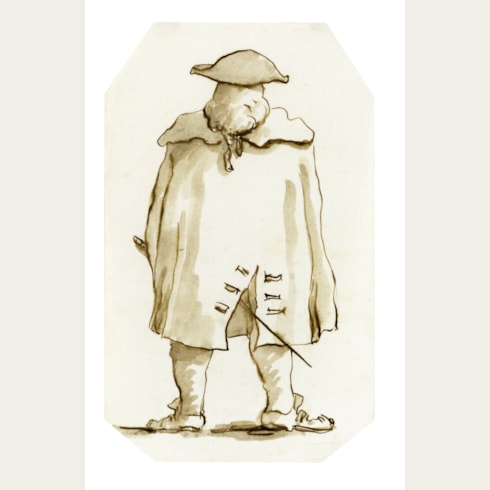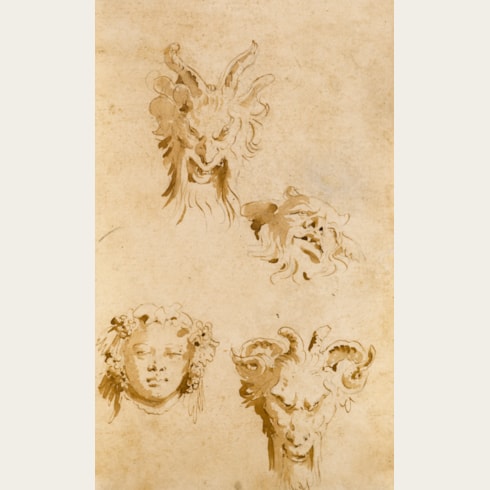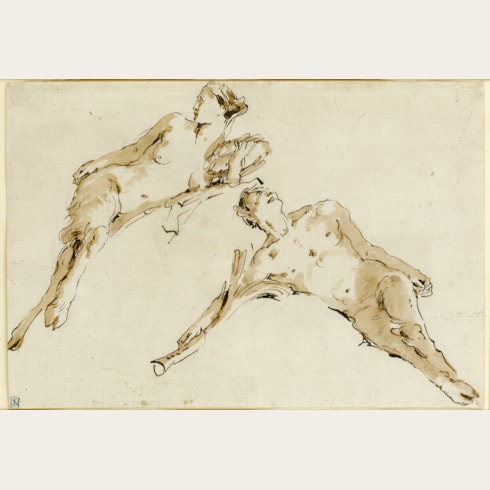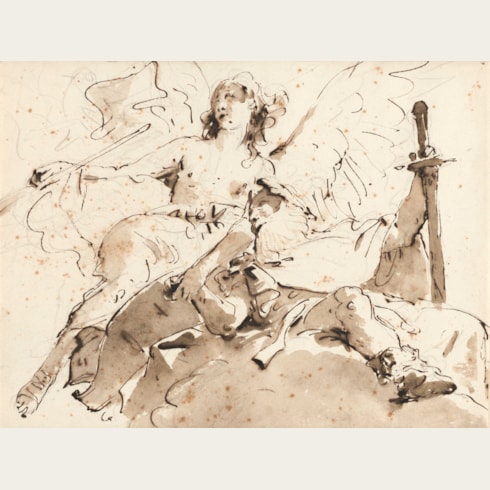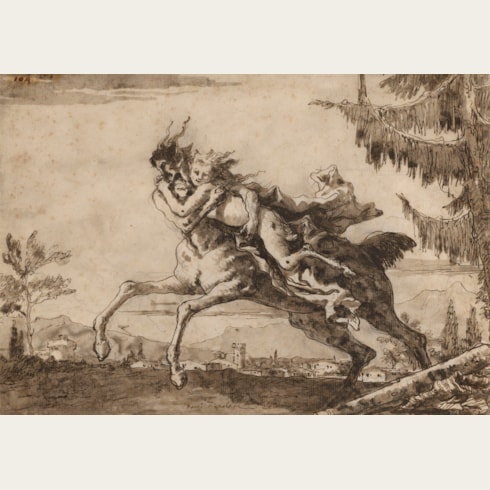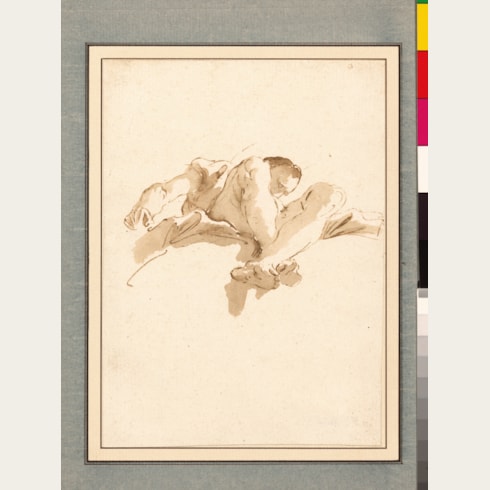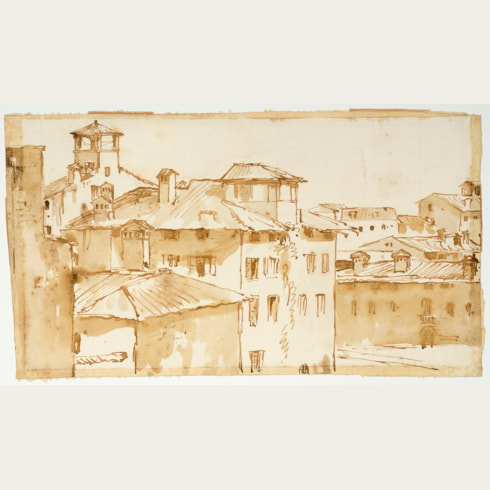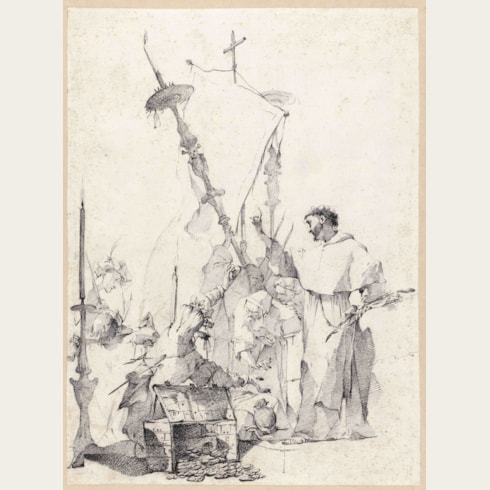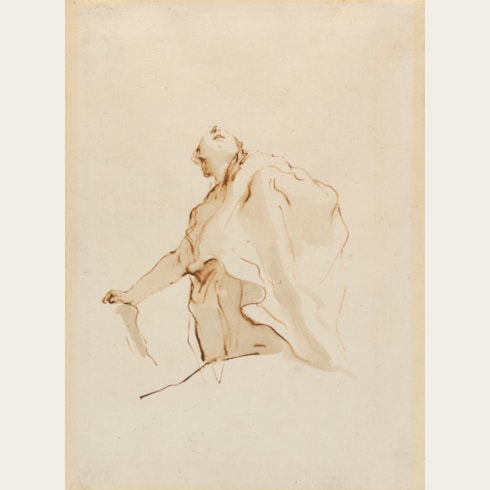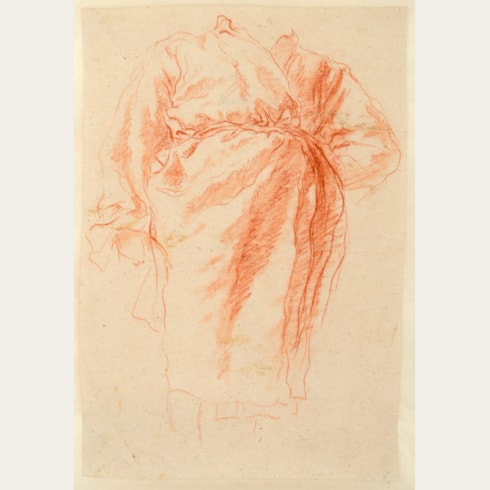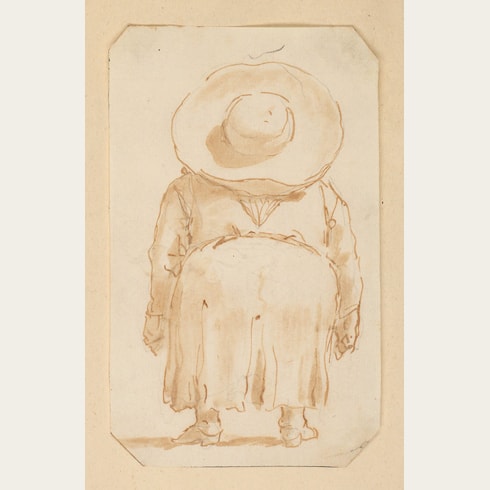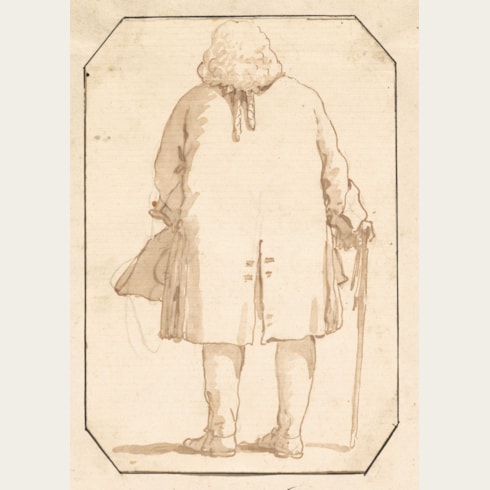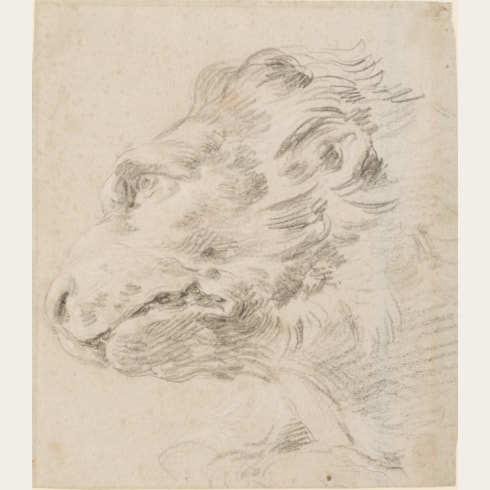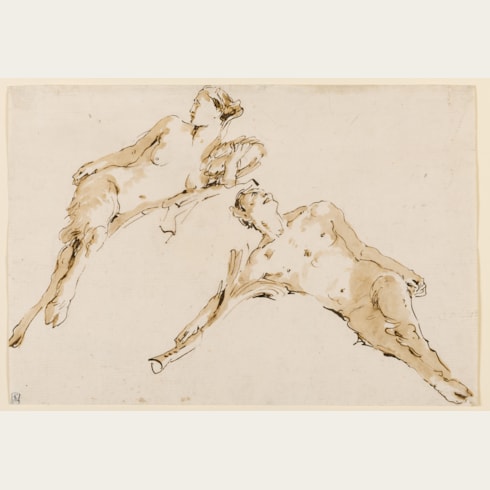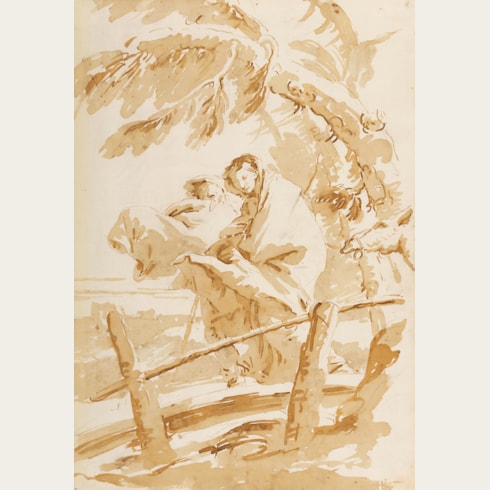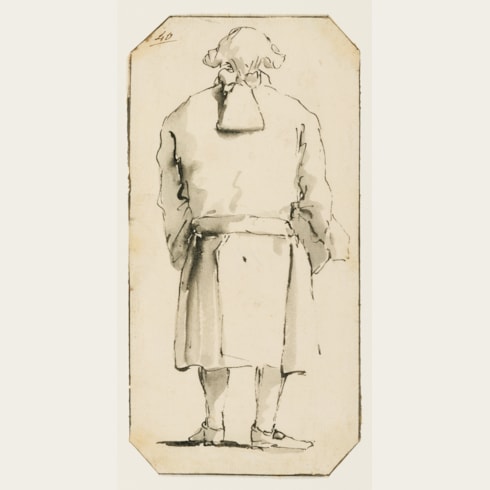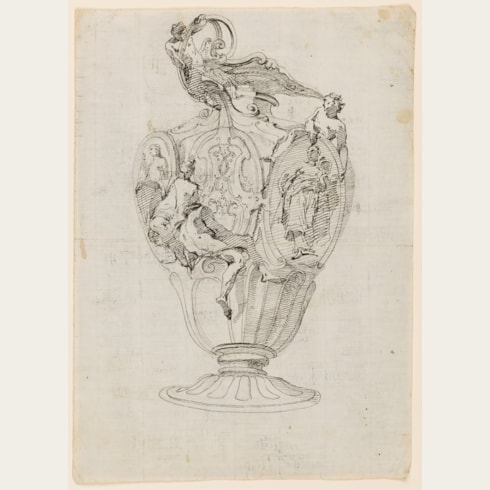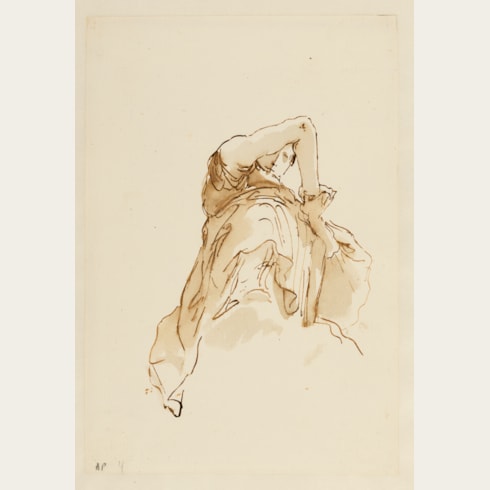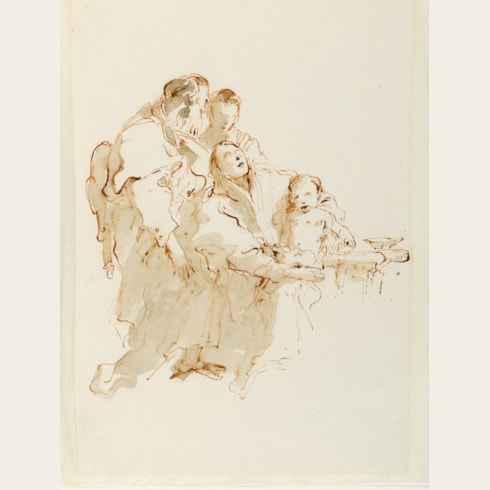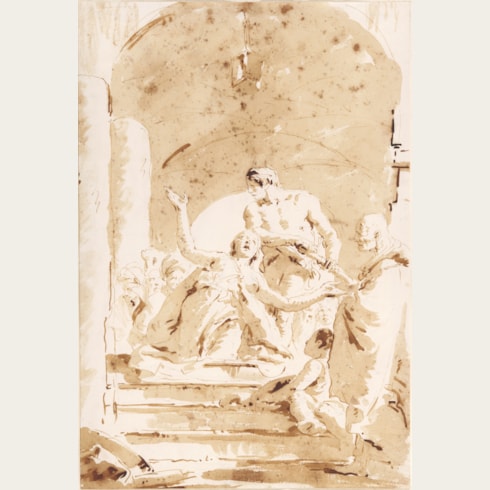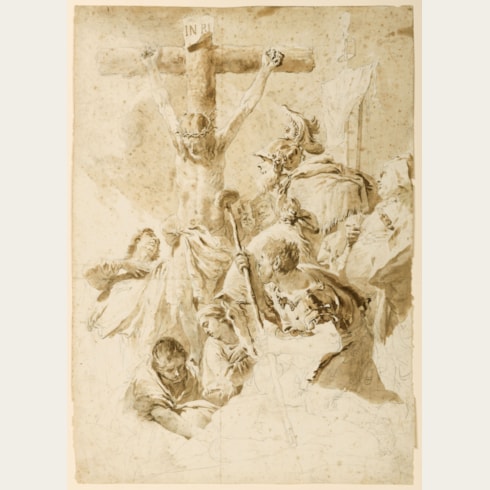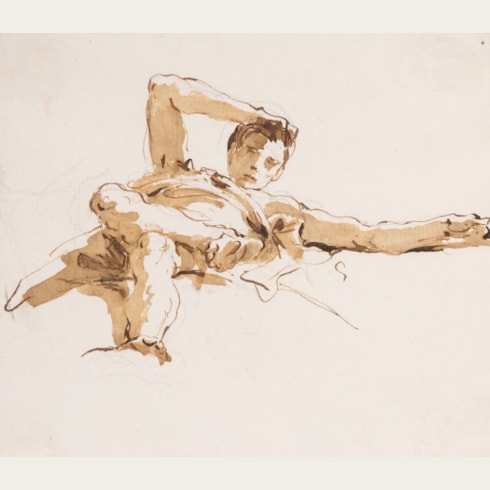Giovanni Battista TIEPOLO
(Venice 1696 - Madrid 1770)
The Head of a Youth, Looking Up to the Left
Inscribed G.B.T. f.l.c. m. and numbered No.2849 on the verso.
Numbered 1054 on the verso.
284 x 204 mm. (11 1/8 x 8 in.)
While both Giambattista and Domenico Tiepolo produced head studies in red chalk, the drawings of the former display a confidence and firmness of outline that is sometimes lacking in the drawings of the younger artist. As has been noted, ‘Giambattista used chalk to model the head, enhancing the sculptural effect by means of light and shade, while Domenico tended toward the decorative: He faithfully recorded every detail, but in his drawings the forms are less densely modeled.’ The present sheet is a particularly fine and fresh example of the elder Tiepolo’s robust draughtsmanship, seen in the confident application of strokes of red chalk, slightly dampened in places to create subtle effects of shadow, set against the contrasting middle tone of the blue paper and the delicately applied highlights of white chalk. Also characteristic of the artist is the assured modelling of the features and the idiosyncratic placement of the head on the page.
This drawing was once part of a large and significant group of Tiepolo drawings in the Bossi-Beyerlen collection in Munich, formed by the painter Johann Dominik Bossi (1767-1853), who was born in Trieste and may have been a student of Domenico Tiepolo in Venice. He worked primarily as a miniaturist in Germany, Austria, Sweden and Russia before settling in Munich, where he was appointed a court painter. Bossi owned some 850 drawings by both Giambattista and Domenico Tiepolo, of which about 630 were studies in black or red chalk on blue paper – including nearly three hundred studies of heads - and the remainder in pen and grey or brown ink. Bossi’s collection of drawings passed to his daughter Maria Theresa Caroline Bossi (1825-1881) and her husband Carl Christian Friedrich Beyerlen (1826-1881). In March 1882, six months after the death of Maria Theresa Bossi, the drawings were sold at auction in Stuttgart and dispersed. A large number of the Bossi-Beyerlen drawings (although none of the studies of heads) were acquired at the sale by the Staatsgalerie in Stuttgart, and remain there today. Another 120 of the drawings, including the present sheet, passed through several German collections until they were dispersed in the early 20th century.
The number 2849 on the verso of the sheet is found on many drawings with a Bossi-Beyerlen provenance. It has been suggested that this number may have been a code devised by Domenico Tiepolo in the process of preparing an inventory of the family studio. Some of the drawings, including the present sheet, have a second set of numbers in pencil. This may refer to the Bossi-Beyerlen inventory, the order of which was loosely followed when the drawings were divided into groups and sold at auction in Stuttgart in 1882.
The leading painter in Venice for much of his career, Giambattista Tiepolo was also undoubtedly one of the finest Italian draughtsmen of the 18th century. That his drawings were greatly admired in his lifetime is confirmed by contemporary accounts; indeed, as early as 1732 the writer Vincenzo da Canal remarked that ‘engravers and copyists are eager to copy his works, to glean his inventions and extraordinary ideas; his drawings are already so highly esteemed that books of them are sent to the most distant countries’. From the late 1730’s until his departure for Spain in 1762, Tiepolo enjoyed his most productive period as a draughtsman, creating a large number of vibrant pen and wash studies that are among the archetypal drawings of the Venetian Settecento. As one recent scholar has commented, ‘From the start of his career [Tiepolo] had enjoyed drawing as an additional means of expression, with equally original results. He did not draw simply to make an immediate note of his ideas, nor to make an initial sketch for a painting or to study details; he drew to give the freest, most complete expression to his genius. His drawings can be considered as an autonomous artistic genre; they constitute an enormous part of his work, giving expression to a quite extraordinary excursion of the imagination; in this respect, Tiepolo’s graphic work can be compared only with that of Rembrandt.’
Tiepolo’s drawings include compositional studies for paintings and prints, drawings of heads, figure studies for large-scale decorations, landscapes and caricatures, as well as several series of drawings on such themes as the Holy Family. Many of these drawings were bound into albums by theme or subject, and retained by the artist in his studio as a stock of motifs and ideas for use in his own work, or that of his sons and assistants.
Provenance
Johann Dominik Bossi, Munich
His daughter, Maria Theresa Caroline Bossi, Munich
Her husband, Carl Christian Friedrich Beyerlen, Stuttgart
His posthumous sale, Stuttgart, H.G. Gutekunst, 27 March 1882 onwards
Probably Dr. O. Eisenmann, Kassel
Probably Wilhelm Lübke, Stuttgart
Possibly Joseph Baer & Sons, Frankfurt
Anonymous sale, London, Sotheby’s, 15 June 1983, lot 95
Muriel and Philip Berman, Allentown, Pennsylvania.
Literature





